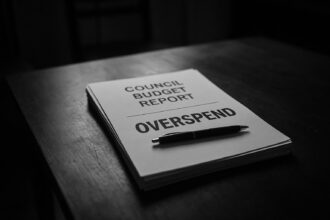Official data show UK average house prices rose 3.7% year‑on‑year in June as buyers returned after a spring slowdown linked to a stamp‑duty change; regional divides persist and a narrowly split Bank of England rate cut adds fresh uncertainty for mortgage costs and future price momentum.
House prices have regained momentum after a spring wobble, with the pace of growth in June the fastest in more than a year as a stamp-duty upheaval faded into the background of buyers re-entering the market. The Independent’s synthesis of official data shows the average UK property value rising 3.7% in the year to June, taking the national average to about £269,000. That marks a notable acceleration from May’s 2.7%, and comes after a government change in stamp-duty rules earlier in the year that briefly cooled activity before buyers returned. The report also notes that the rate of price growth may still be volatile month to month, but underlying demand appears resilient as rates eased modestly. As Pantheon Macroeconomics’ Elliott Jordan-Doak put it, house prices are recovering quickly from the disruption caused by the hike to stamp duty in April, though “month-to-month inflation can be volatile at the best of times.” Speaking to The Independent, he added that while gains could wobble in the near term, fundamentals look supportive for a rise in prices through the second half of the year. (ons.gov.uk, bankofengland.co.uk, gov.uk)
The latest official figures also paint a picture of how this momentum plays out across the country, with regional disparities continuing to shape affordability and buyer behaviour. Regional data from the same period show England’s average house price around £291,000, Wales roughly £210,000 and Scotland about £192,000, underscoring the north–south and urban–rural divide that remains at the heart of the housing market. Kensington and Chelsea remains the most expensive English local authority, with the average price around £1.4 million, while the City of Westminster sits just over £1 million and Camden around £876,000; London holes a large gap above many other areas, reflecting the capital’s enduring price strength. In London, a closer look reveals continued high values in central boroughs even as some surrounding areas have moved differently depending on supply and demand dynamics. These patterns come as the Office for National Statistics’ figures for May 2025 highlighted particular concentration of demand in London and other high-value boroughs, a theme that persisted into the summer. The same period also saw rents continuing to rise: average private rents rose in the year to July by around 5.9% to about £1,343 per month UK-wide, with England’s rents near £1,399 and Scotland near £999, illustrating ongoing pressure on living costs even as house-price growth steadies. The data also flag that, while price growth remains positive, the pace of rent inflation is easing from its earlier highs, a trend closely watched by borrowers and policymakers alike. (gov.uk, ons.gov.uk)
Against this backdrop, the policy landscape remains a critical driver of housing-market dynamics. The Bank of England’s Monetary Policy Summary for June 2025 confirmed Bank Rate at 4.25% after a 6–3 vote, with authorities emphasising a data-dependent path and a cautious, gradual approach to any further easing. Officials stressed that disinflation was under way but inflation remained above target in the near term, urging market participants to anchor expectations while monitoring the labour market for signs of pay growth re-accelerating. The minutes underscored that monetary policy would stay intentionally restrictive for the time being, even as the Committee acknowledged a margin of slack opening in the economy and pay growth moderating. In May, the BoE had already signalled a similar stance, noting inflation momentum and the uncertain balance of supply and demand. More recently, Reuters reported that on 7 August 2025 the Bank of England cut Bank Rate to 4.00% in a divided 5–4 decision, the result of a historically close vote that highlighted continued concerns over inflation versus growth. The split decision and the timing of the cut illustrate how policy communications and data shocks can shape the trajectory of mortgage rates and housing-market activity in the months ahead. Kensington and Chelsea’s price prominence, alongside the broader English average near £290,000, remains a variable in the policy outlook as authorities weigh the costs and benefits of additional easing against the risk of rekindled price pressures. (beta.bankofengland.co.uk, bankofengland.co.uk, gov.uk, reuters.com)
Reference Map:
Source: Noah Wire Services
- https://www.independent.co.uk/news/uk/home-news/inflation-house-price-uk-map-explained-b2810906.html – Please view link – unable to able to access data
- https://www.ons.gov.uk/economy/inflationandpriceindices/bulletins/privaterentandhousepricesuk/august2025 – ONS monthly bulletin on private rent and house prices across the United Kingdom reports that, in the year to June 2025, UK house prices rose 3.7% to an average of £269,000, aided by easing monetary conditions and renewed buyer activity. Regional variation persists, with England listing higher averages around £291,000, Wales £210,000, and Scotland £192,000. The bulletin also shows private rents continuing to rise, with the UK average rent around £1,344 per month in June, rising further to July levels. These figures illustrate ongoing housing-market momentum despite affordability pressures and shifting Stamp Duty, informing policy debate and consumer expectations today.
- https://www.gov.uk/government/statistics/uk-house-price-index-for-may-2025/uk-house-price-index-england-may-2025 – May 2025 UK House Price Index shows Kensington and Chelsea as the most expensive English local authority, with an average price around £1.4 million, underscoring London’s extreme affordability gap. The index also highlights that the City of Westminster and Camden sit near the top of the list, while Burnley features among the least expensive areas. Across England, the average house price stands near £290,000, with London boroughs predominating the upper end of the spectrum. The release confirms persistent regional disparities in property values, driven by supply constraints, demand concentration in the capital, and shifts in buyer confidence during the period.
- https://www.gov.uk/guidance/stamp-duty-land-tax-buying-an-additional-residential-property – HMRC’s Stamp Duty Land Tax guidance for buying an additional residential property explains the higher rates that apply when purchasing a second home or buy-to-let. From 1 April 2025, buyers face SDLT on the whole purchase at higher rates, with 5% on the portion up to £125,000, 7% on £125,001–£250,000, 10% on £250,001–£925,000, 15% on £925,001–£1.5m, and 17% above £1.5m. The guidance also notes the surcharge applies to additional properties and is separate from the main-residence rates. It provides examples and directs readers to the government calculator. This change aligns with tax policy aimed at adjusting incentives for second-home acquisitions.
- https://www.ons.gov.uk/economy/inflationandpriceindices/bulletins/privaterentandhousepricesuk/july2025 – Both private rents and house prices in the UK were the focus of the July 2025 ONS release. The data show private rent inflation easing slightly as the 12-month rise to June 2025 stood at around 6.7%, with England’s rents averaging about £1,399, Wales £804, and Scotland £999. The UK House Price Index indicates prices rose 3.9% year on year to May 2025, placing the national average around £269,000. Regional variations persist: higher prices in England overall, and notable divergence between London’s values and many northern authorities. The bulletin emphasises provisional estimates and revisions ahead of August’s updated data figures.
- https://beta.bankofengland.co.uk/monetary-policy-summary-and-minutes/2025/june-2025 – The Bank of England’s June 2025 Monetary Policy Summary confirms Bank Rate at 4.25% after recent gradual reductions, with the MPC emphasising data-dependency and a cautious path toward easing further. The document notes disinflation is underway but inflation remains above target in the near term, requiring a restrictive stance to anchor expectations. It highlights that the policy path is not pre-set and warrant a measured, gradual approach to further reductions. The minutes discuss potential scenarios for growth and pay growth, stressing that any future moves will depend on the evolving balance of domestic demand, supply, and inflation pressures over time.
- https://www.reuters.com/world/uk/bank-england-policymakers-speak-after-rate-cut-following-narrow-vote-2025-08-07/ – Reuters reports that on 7 August 2025 the Bank of England cut Bank Rate from 4.25% to 4.00% in a divided decision, with five MPC members voting for the cut and four preferring to hold. The coverage notes the move reflects slower inflation momentum and softer demand, while warning inflation could rebound if energy and food costs rise. Governor Bailey signalled a cautious easing path, with future reductions contingent on incoming data. The story highlights the importance of communication from the MPC about the gradual pace of easing and the risk that policy remains restrictive while inflation remains above target.
Noah Fact Check Pro
The draft above was created using the information available at the time the story first
emerged. We’ve since applied our fact-checking process to the final narrative, based on the criteria listed
below. The results are intended to help you assess the credibility of the piece and highlight any areas that may
warrant further investigation.
Freshness check
Score:
9
Notes:
 Fresh: the key datapoints in the narrative (UK annual house-price growth of 3.7% to an average £269,000 for the 12 months to June) trace to the Office for National Statistics (ONS) statistical bulletin released 20 August 2025 (
Fresh: the key datapoints in the narrative (UK annual house-price growth of 3.7% to an average £269,000 for the 12 months to June) trace to the Office for National Statistics (ONS) statistical bulletin released 20 August 2025 ( ONS release date: 20 Aug 2025). The Independent publish timestamp is 20 Aug 2025 12:45 BST — same day, so this is timely reporting of official data.
ONS release date: 20 Aug 2025). The Independent publish timestamp is 20 Aug 2025 12:45 BST — same day, so this is timely reporting of official data.  Revision note: the ONS bulletin also documents a method improvement that produced downward revisions to earlier months (ONS warned of larger-than-normal revisions on 20 Aug 2025), so previous provisional figures (for May/June) have shifted.
Revision note: the ONS bulletin also documents a method improvement that produced downward revisions to earlier months (ONS warned of larger-than-normal revisions on 20 Aug 2025), so previous provisional figures (for May/June) have shifted.  Replication: the narrative has been widely republished the same day across mainstream and aggregator outlets (FT, The Guardian, The Standard, MortgageSolutions, etc.), which is expected for official statistics; a number of low-quality aggregators and syndication pages also reproduced the copy — flag for editors to watch for duplicate syndication.
Replication: the narrative has been widely republished the same day across mainstream and aggregator outlets (FT, The Guardian, The Standard, MortgageSolutions, etc.), which is expected for official statistics; a number of low-quality aggregators and syndication pages also reproduced the copy — flag for editors to watch for duplicate syndication.  No substantially similar narrative with the June 3.7% / £269k headline appears more than 7 days earlier; earlier months carried related coverage (April–May stamp duty effects) but not this exact ONS June headline.
No substantially similar narrative with the June 3.7% / £269k headline appears more than 7 days earlier; earlier months carried related coverage (April–May stamp duty effects) but not this exact ONS June headline.
Quotes check
Score:
6
Notes:
 Reused comment: the direct quotation attributed to Elliott Jordan-Doak (Pantheon Macroeconomics) — “House prices are recovering quickly from the disruption caused by the hike to stamp duty in April” and the follow-ups — appears verbatim across numerous same‑day pieces (Independent, The Standard, aggregator pages). I could not find an earlier, clearly time‑stamped Pantheon press release containing that exact wording; the comment appears to have been provided to multiple journalists (likely via emailed analyst comment or press contact) and then reproduced widely.
Reused comment: the direct quotation attributed to Elliott Jordan-Doak (Pantheon Macroeconomics) — “House prices are recovering quickly from the disruption caused by the hike to stamp duty in April” and the follow-ups — appears verbatim across numerous same‑day pieces (Independent, The Standard, aggregator pages). I could not find an earlier, clearly time‑stamped Pantheon press release containing that exact wording; the comment appears to have been provided to multiple journalists (likely via emailed analyst comment or press contact) and then reproduced widely.  Earliest online appearances of the identical wording are all on 20 Aug 2025 (same day as ONS bulletin). Implication: the quote is not unique to the Independent (possible syndicated analyst comment), so treat as widely distributed analysis rather than an exclusive interview. If exclusivity/originality of the quote is critical, editors should seek direct confirmation from Pantheon or the journalist who filed the item.
Earliest online appearances of the identical wording are all on 20 Aug 2025 (same day as ONS bulletin). Implication: the quote is not unique to the Independent (possible syndicated analyst comment), so treat as widely distributed analysis rather than an exclusive interview. If exclusivity/originality of the quote is critical, editors should seek direct confirmation from Pantheon or the journalist who filed the item.
Source reliability
Score:
8
Notes:
 Strong primary sources cited: the narrative relies on ONS (authoritative official statistics, bulletin released 20 Aug 2025), Bank of England minutes/reports and Reuters coverage of the 7 Aug 2025 Bank Rate cut — all reputable institutions.
Strong primary sources cited: the narrative relies on ONS (authoritative official statistics, bulletin released 20 Aug 2025), Bank of England minutes/reports and Reuters coverage of the 7 Aug 2025 Bank Rate cut — all reputable institutions.  Independent is a standard national outlet reporting on official statistics.
Independent is a standard national outlet reporting on official statistics.  Caveat: ONS itself flagged a methodological change and larger-than-normal revisions on 20 Aug 2025; that reduces the stability of the short-run month-to-month numbers.
Caveat: ONS itself flagged a methodological change and larger-than-normal revisions on 20 Aug 2025; that reduces the stability of the short-run month-to-month numbers.  Distribution risk: the same text (including analyst quotes) has been reproduced by lower-quality aggregators and press‑wire reprints — editors should confirm any unique claims and attribute analyst comments accurately.
Distribution risk: the same text (including analyst quotes) has been reproduced by lower-quality aggregators and press‑wire reprints — editors should confirm any unique claims and attribute analyst comments accurately.  If any named company/person (e.g. Pantheon, Foxtons) commentary is material, direct sourcing to the firm or original transcript is recommended for verification.
If any named company/person (e.g. Pantheon, Foxtons) commentary is material, direct sourcing to the firm or original transcript is recommended for verification.
Plausability check
Score:
8
Notes:
 Plausible and consistent with official statistics: the headline figures (3.7% y/y to £269k; England ~£291k; rents +5.9% to £1,343) match the ONS bulletin (20 Aug 2025) and other reputable reporting the same day.
Plausible and consistent with official statistics: the headline figures (3.7% y/y to £269k; England ~£291k; rents +5.9% to £1,343) match the ONS bulletin (20 Aug 2025) and other reputable reporting the same day.  Bank of England rate cut (to 4.0% on 7 Aug 2025, narrow 5–4 vote) is confirmed by Reuters and contemporaneous coverage.
Bank of England rate cut (to 4.0% on 7 Aug 2025, narrow 5–4 vote) is confirmed by Reuters and contemporaneous coverage.  Provisional data & revisions: ONS explicitly notes provisional estimates for recent months and a methods improvement that led to downward revisions of earlier months — this makes short‑term month‑to‑month comparisons volatile and warrants clear labelling in the narrative (the Independent mentions volatility).
Provisional data & revisions: ONS explicitly notes provisional estimates for recent months and a methods improvement that led to downward revisions of earlier months — this makes short‑term month‑to‑month comparisons volatile and warrants clear labelling in the narrative (the Independent mentions volatility).  If the narrative presents the analyst quote as exclusive or frames the rebound as a durable trend without caveating the ONS revision risk, that overstates confidence.
If the narrative presents the analyst quote as exclusive or frames the rebound as a durable trend without caveating the ONS revision risk, that overstates confidence.  Tone/language: region-specific figures (Kensington & Chelsea £1.46m etc.) align with ONS local authority outputs; no obvious regional phrasing errors detected.
Tone/language: region-specific figures (Kensington & Chelsea £1.46m etc.) align with ONS local authority outputs; no obvious regional phrasing errors detected.
Overall assessment
Verdict (FAIL, OPEN, PASS): PASS
Confidence (LOW, MEDIUM, HIGH): HIGH
Summary:
 PASS — HIGH confidence. The narrative is a timely, accurate report of official statistics published by the Office for National Statistics on 20 August 2025 (
PASS — HIGH confidence. The narrative is a timely, accurate report of official statistics published by the Office for National Statistics on 20 August 2025 ( ONS bulletin date: 20 Aug 2025). Major factual claims (UK house-price growth 3.7% y/y to £269,000; regional averages; private rent inflation ~5.9% to £1,343; BoE rate cut to 4% on 7 Aug 2025) are corroborated by the ONS bulletin and reputable outlets (ONS, GOV.UK, Reuters, Bank of England material).
ONS bulletin date: 20 Aug 2025). Major factual claims (UK house-price growth 3.7% y/y to £269,000; regional averages; private rent inflation ~5.9% to £1,343; BoE rate cut to 4% on 7 Aug 2025) are corroborated by the ONS bulletin and reputable outlets (ONS, GOV.UK, Reuters, Bank of England material).  Key risks to flag for editors: (1) ONS implemented a methodological improvement on 20 Aug 2025 that produced notable downward revisions to some earlier months — this makes short-term month-to-month comparisons more uncertain and should be signposted in any downstream use of the numbers (
Key risks to flag for editors: (1) ONS implemented a methodological improvement on 20 Aug 2025 that produced notable downward revisions to some earlier months — this makes short-term month-to-month comparisons more uncertain and should be signposted in any downstream use of the numbers ( ); (2) the analyst quote from Pantheon Macroeconomics is widely syndicated the same day (
); (2) the analyst quote from Pantheon Macroeconomics is widely syndicated the same day ( possible non‑exclusive recycled comment) and should not be presented as an Independent exclusive; (3) the story appears across low-quality aggregators as same‑day rewrites — editors should check for inadvertent republication/duplication and confirm attribution for analyst comments. Overall, the report accurately reflects authoritative data but requires the standard caution around provisional/revised statistics and syndicated analyst commentary.
possible non‑exclusive recycled comment) and should not be presented as an Independent exclusive; (3) the story appears across low-quality aggregators as same‑day rewrites — editors should check for inadvertent republication/duplication and confirm attribution for analyst comments. Overall, the report accurately reflects authoritative data but requires the standard caution around provisional/revised statistics and syndicated analyst commentary. 













